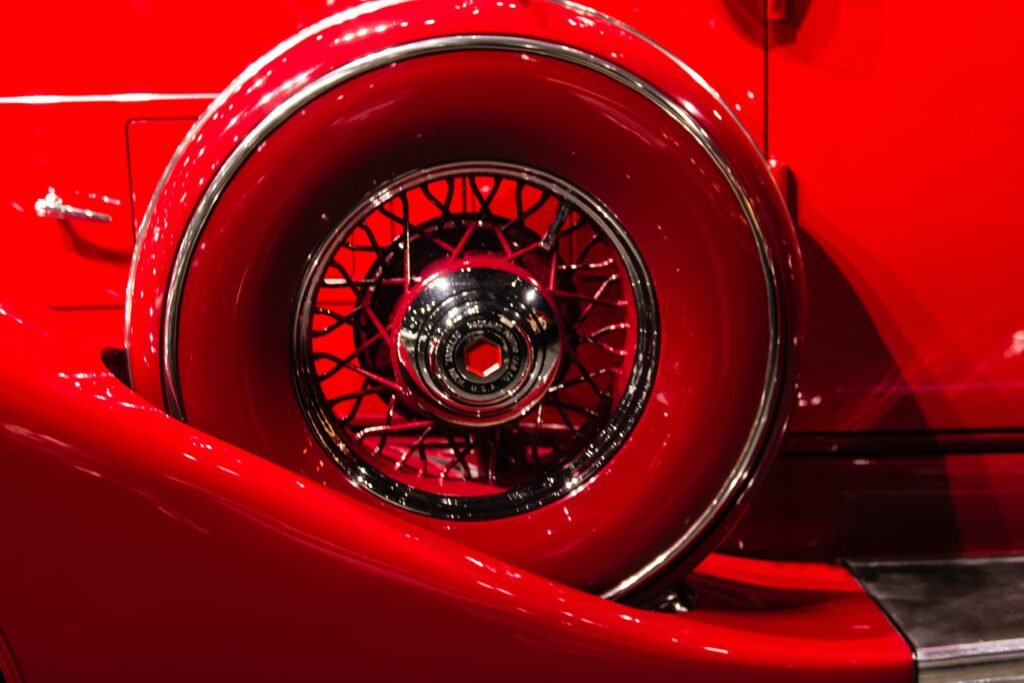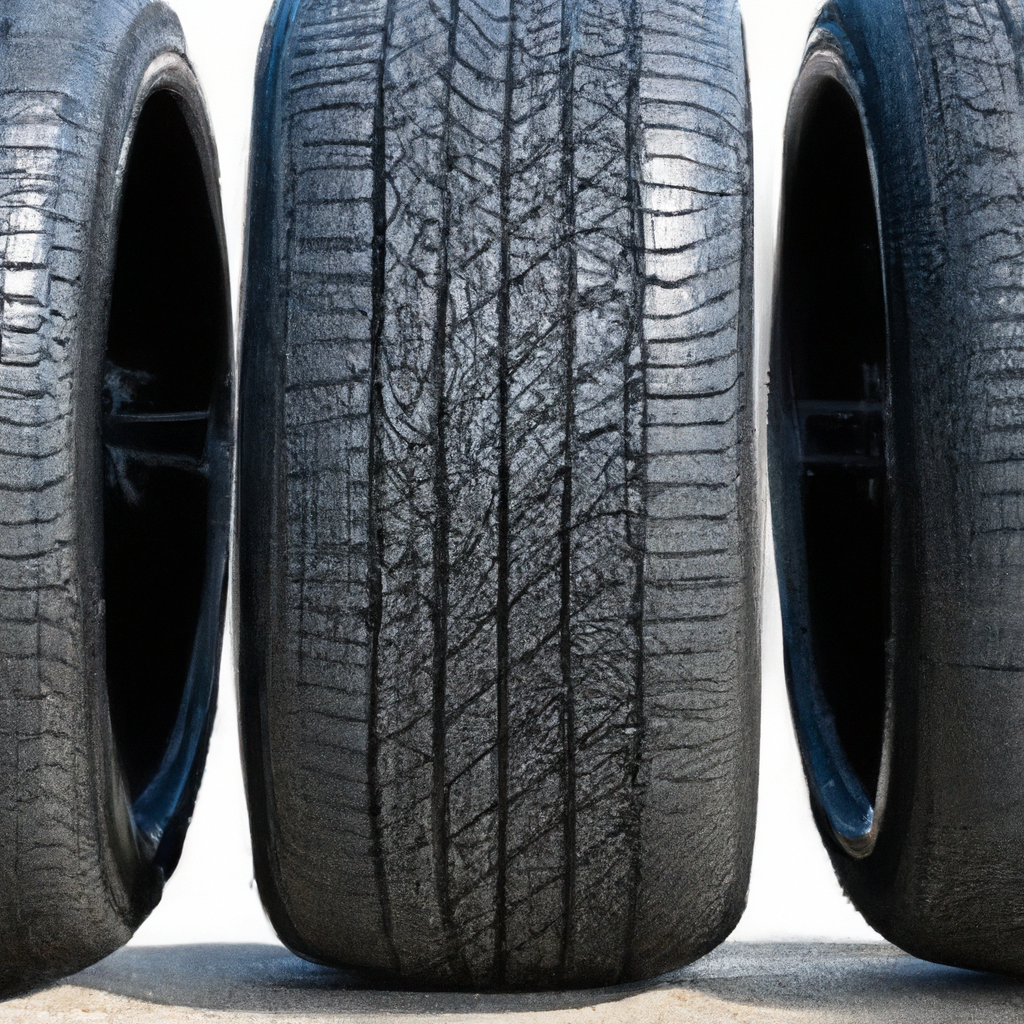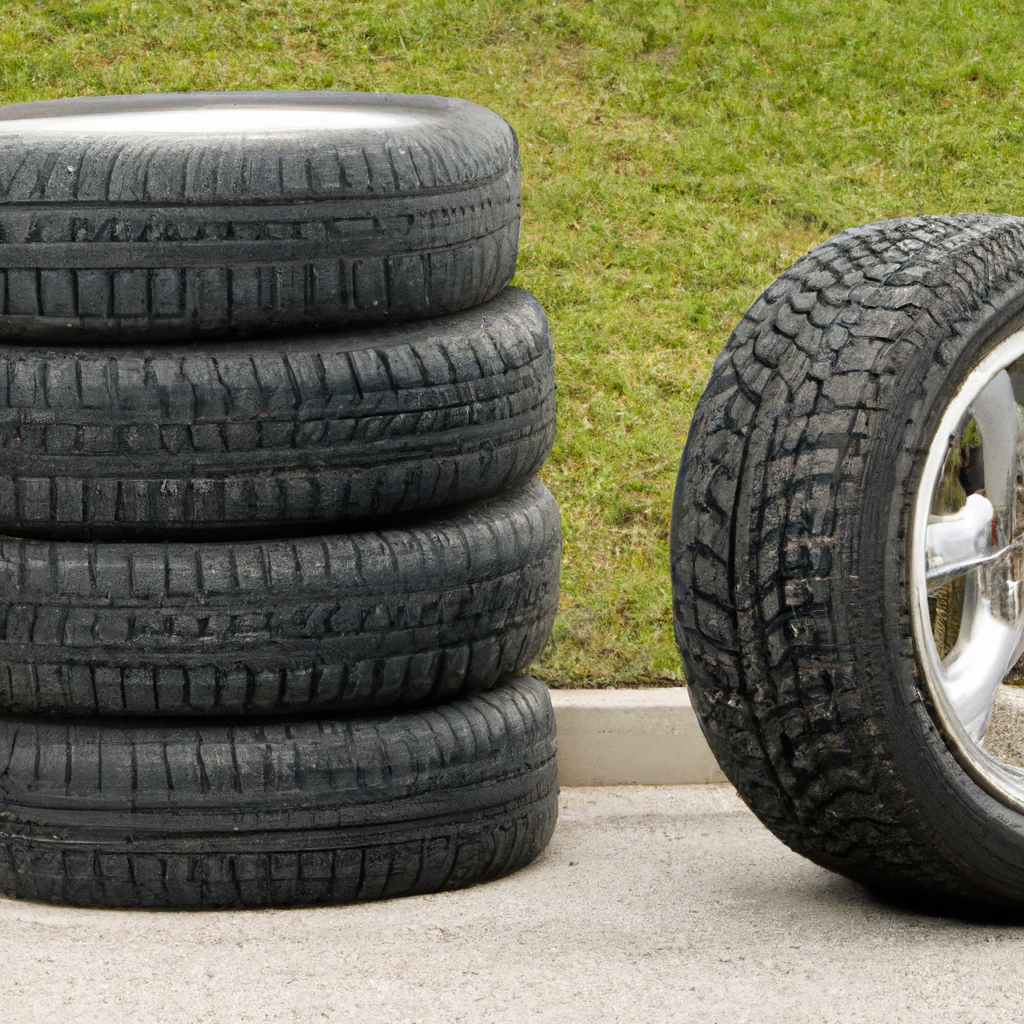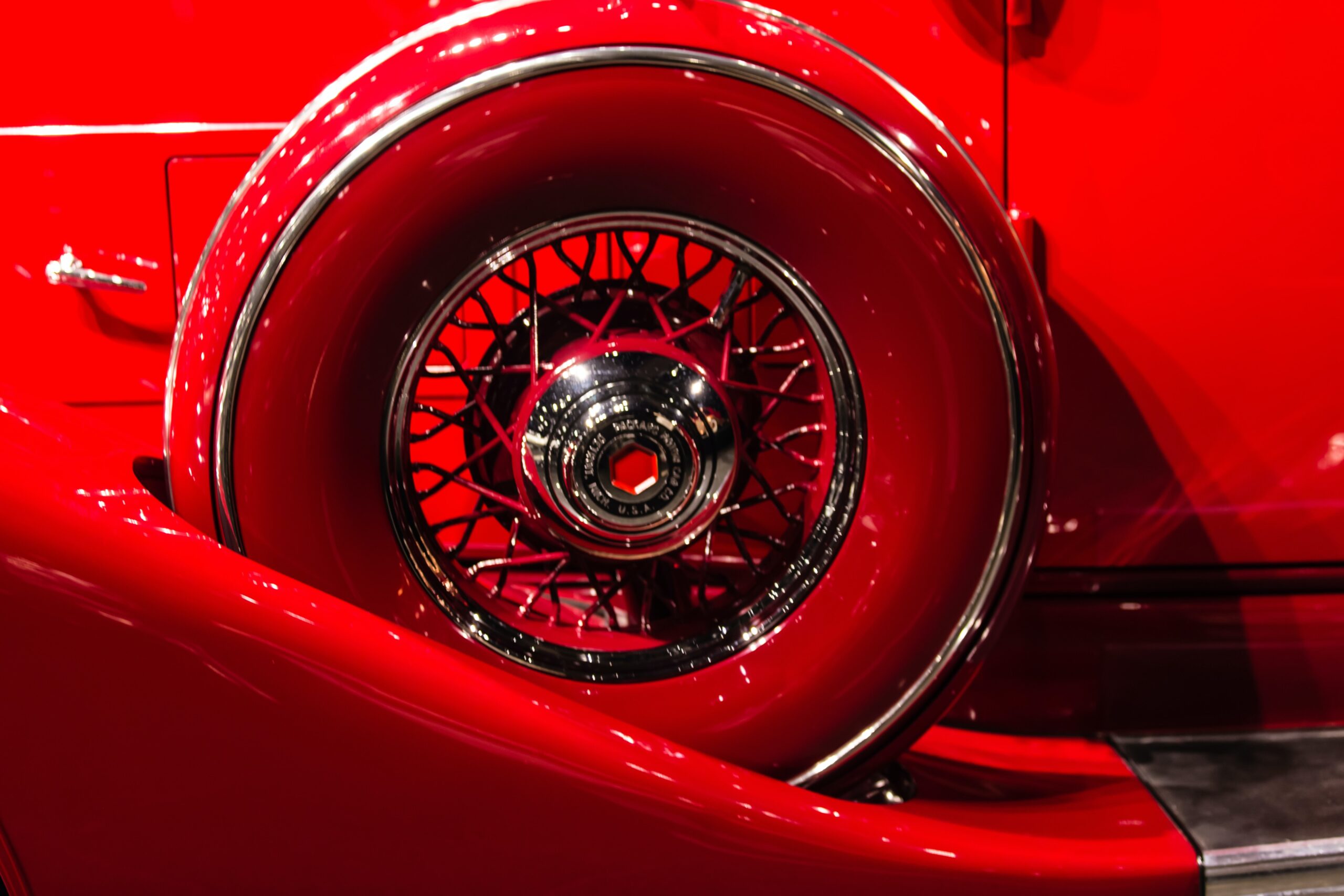Have you ever wondered if it’s possible to mix run-flat tires with regular tires on your vehicle? Well, the answer might surprise you. Mixing these two types of tires can actually be done, but it’s not recommended. While it may seem like a good idea to save some money by only replacing one or a few tires, it can actually have negative effects on your vehicle’s performance and safety. In this article, we will explore the reasons behind this recommendation and the potential risks associated with mixing run-flat and regular tires on your car. So, before making any decisions, let’s dive into the details!

What are run-flat tires?
Definition of run-flat tires
Run-flat tires are a type of tire that is designed to allow you to continue driving even after a tire has been punctured or damaged. These tires are built with reinforced sidewalls and a special rubber compound that allows them to support the weight of the vehicle even if they have lost air pressure. This means that in the event of a tire puncture, you can still safely drive for a limited distance at reduced speeds, typically around 50 miles, to reach a repair shop or a safe location.
Benefits of run-flat tires
One of the main benefits of run-flat tires is the added safety they provide. In the case of a sudden tire puncture or blowout, run-flat tires allow you to maintain control of your vehicle and safely continue driving, reducing the risk of accidents or dangerous situations. Another advantage is the convenience they offer. Since run-flat tires allow you to drive to a repair facility or safe location, you don’t have to worry about being stranded on the side of the road waiting for assistance. This can save you time and help you avoid the hassle of arranging for a tow truck or roadside assistance.
Features of run-flat tires
Run-flat tires have several features that make them unique. One key feature is their reinforced sidewalls, which provide the tire with additional support and stability even when there is a loss of air pressure. The special rubber compound used in run-flat tires is also designed to withstand heat build-up, allowing them to continue running without risking a complete tire failure. Additionally, run-flat tires often come equipped with a tire pressure monitoring system (TPMS) that alerts you when your tire pressure drops below a certain level, providing you with early warning of a potential tire issue.
What are regular tires?
Definition of regular tires
Regular tires, also referred to as conventional or non-run-flat tires, are the standard tires that come fitted on most vehicles from the factory. They are built with a normal structure and do not have the reinforced sidewalls or special rubber compound found in run-flat tires. Regular tires rely on maintaining proper air pressure to function optimally, and if they sustain a puncture or blowout, they will rapidly lose air pressure and require immediate attention or replacement.
Types of regular tires
Regular tires come in different types depending on the intended use and driving conditions. Some common types include all-season tires, summer tires, winter tires, and performance tires. All-season tires are designed to provide good traction in a variety of weather conditions, while summer tires excel in dry and warm conditions. Winter tires are specifically designed to provide enhanced traction and control in snowy or icy conditions. Performance tires, on the other hand, are engineered for high-performance vehicles and offer improved handling, grip, and cornering capabilities.
Advantages of regular tires
While regular tires do not offer the same level of safety and convenience as run-flat tires, they have their own advantages. One of the main benefits of regular tires is their overall lower cost compared to run-flat tires. Regular tires are more affordable to purchase, and in the event of a puncture or damage, they can often be repaired instead of having to be replaced entirely, reducing long-term costs. Regular tires also tend to provide a smoother and more comfortable ride, as they do not have the reinforced sidewalls of run-flat tires, which can be stiffer and impact ride quality. Additionally, regular tires offer a wider range of options and choices when it comes to tread patterns, sizes, and brands, allowing you to select tires that best suit your specific driving needs and preferences.
Compatibility Issues
Differences in design and construction
One of the main compatibility issues when mixing run-flat tires with regular tires is the fundamental differences in design and construction between the two types of tires. Run-flat tires are specifically engineered to have reinforced sidewalls and stronger overall construction to support the weight of a vehicle even when completely deflated. On the other hand, regular tires do not have these reinforced sidewalls and rely on maintaining proper air pressure for optimal performance. Mixing these two types of tires can result in an imbalance in handling and performance, potentially impacting the stability and safety of the vehicle.
Unequal handling and performance
Mixing run-flat tires with regular tires can lead to unequal handling and performance characteristics. Run-flat tires often have a stiffer sidewall and different tread design compared to regular tires. This can affect the vehicle’s ability to handle corners, provide consistent traction, and result in different steering responses. Unequal handling can not only compromise the safety of the vehicle but also affect the overall driving experience for the driver.
Risk of damage to the vehicle
Mixing run-flat tires with regular tires can also pose a risk of damage to the vehicle. The imbalance in handling and performance caused by the different tire types can put additional strain on the suspension system, steering components, and other parts of the vehicle. This can lead to accelerated wear and tear, increased likelihood of mechanical failures, and potentially costly repairs.
Voiding the tire warranty
Another consideration when mixing run-flat tires with regular tires is the potential voiding of the tire warranty. Tire manufacturers often provide warranties for their specific tire models, which may have specific requirements and conditions for coverage. Mixing different tire types may be considered a violation of the warranty terms, resulting in the loss of any warranty benefits and leaving you responsible for any future tire issues or failures.
Effects on Vehicle Handling
Different grip and traction characteristics
When run-flat tires and regular tires are mixed, one of the noticeable effects is the difference in grip and traction characteristics between the two types. Run-flat tires, with their reinforced sidewalls and stiffer construction, may provide better stability and grip during emergency maneuvers or in wet or slippery conditions. Mixing them with regular tires, which have a more flexible sidewall and different tread pattern, can result in uneven grip levels across the four tires, potentially compromising vehicle handling and control.
Inconsistent braking and acceleration
Another effect of mixing run-flat tires with regular tires is the potential for inconsistent braking and acceleration. Run-flat tires may have different braking distances and acceleration capabilities compared to regular tires due to their unique design and construction. This difference in performance can lead to an inconsistent driving experience and make it challenging to anticipate and react to emergency situations effectively.
Uneven wear and tear
Mixing run-flat tires with regular tires can also result in uneven wear and tear on the tires. The unequal handling characteristics and grip levels between the two types can cause one set of tires to wear more quickly than the other. This can lead to an imbalanced and potentially dangerous situation where one pair of tires has significantly less tread depth than the rest, compromising traction and overall safety.
Impact on driving dynamics
The mismatched characteristics of run-flat tires and regular tires can have a significant impact on the driving dynamics of the vehicle. Mixing these two types can result in unpredictable handling, reduced stability, and compromised control. It is important to keep in mind that a vehicle’s suspension, braking system, and other components are often designed to work optimally with a specific type of tire. Mixing different tire types can disrupt this balance and compromise the vehicle’s overall performance.

Safety Concerns
Increased risk of accidents
One of the major safety concerns associated with mixing run-flat tires and regular tires is the increased risk of accidents. The unequal handling and grip levels between the two tire types can make it more difficult for the driver to maintain control of the vehicle in emergency situations, such as sudden turns or hard braking. This can result in a higher likelihood of accidents, especially when driving at higher speeds or in adverse weather conditions.
Compromised stability and control
Mixing run-flat tires with regular tires can compromise the stability and control of the vehicle. The differences in handling and performance characteristics can make the vehicle feel unstable and less predictable, impairing the driver’s ability to safely navigate the road. This compromised stability can lead to unintended lane changes, difficulty maintaining a straight line, and reduced confidence behind the wheel.
Potential for blowouts or punctures
Using a combination of run-flat tires and regular tires increases the potential for blowouts or punctures. The difference in construction and design between the two tire types can result in uneven stress distribution and increased strain on the tire walls and tread. This can make the tires more susceptible to damage, including blowouts or punctures, which can have severe consequences, especially at high speeds.
Difficulty in emergency situations
In emergency situations, such as a sudden tire failure, mixing run-flat tires with regular tires can present challenges. While run-flat tires allow you to continue driving to a repair facility or safe location after a puncture, regular tires, without reinforced sidewalls, can rapidly lose air pressure, leading to a complete tire failure. This can leave you stranded on the side of the road or in a potentially unsafe situation, requiring immediate assistance or towing.
Tire Replacement Strategies
Replacing all tires
One of the most effective and recommended tire replacement strategies is to replace all tires on a vehicle at the same time. By replacing all tires simultaneously, you ensure that the tires have the same tread depth, grip levels, and handling characteristics, promoting even wear and balanced performance. This approach minimizes the risk of compatibility issues and ensures consistent handling and safety across all four tires.
Replacing in pairs
If replacing all four tires simultaneously is not financially feasible, the next best option is to replace tires in pairs. This means replacing either the front or rear tires together. By replacing tires in pairs, you still maintain some level of tire uniformity and balance, reducing the risk of handling imbalances and preserving stability. However, it is important to consult your vehicle’s manufacturer guidelines and recommendations when considering this tire replacement strategy.
Rotating tires regularly
Regular tire rotation is another essential aspect of tire maintenance that can help prolong tire life and promote even wear. By rotating the tires at regular intervals, you distribute the wear evenly across the entire set, ensuring that the tires wear at similar rates. This can help maintain balanced handling and reduce the risk of compatibility issues when mixing different tire types. Following a specific rotation pattern outlined in the vehicle owner’s manual or consulting a tire professional is advisable to ensure proper rotation and maximize tire performance.

Professional Recommendations
Manufacturer guidelines
When considering tire options for your vehicle, it is crucial to consult the manufacturer’s guidelines and recommendations. Vehicle manufacturers often specify the type, size, and specific tire model that best suits the vehicle’s design, suspension system, and performance characteristics. Following these guidelines helps ensure that the tires chosen are compatible and provide optimal handling, safety, and longevity.
Consulting tire experts or mechanics
Seeking the advice of tire experts or mechanics can provide valuable insights and recommendations when selecting tires for your vehicle. These professionals have in-depth knowledge of different tire types, brands, and performance characteristics. They can assess your specific driving needs, budget, and vehicle requirements to help you make an informed decision on the most suitable tire options. Whether it’s understanding the pros and cons of mixing run-flat tires with regular tires or recommending the best tire replacement strategy, their expertise can guide you towards the right choice.
Considerations for specific vehicle models
Certain vehicle models may have specific considerations when it comes to tire compatibility and replacement. Performance or sports cars, for example, often have unique suspension setups and handling characteristics that are tailored to specific tires. Mixing different tire types on these vehicles can have a more pronounced impact on performance and driving dynamics. In such cases, it is crucial to consult the manufacturer, a specialized tire professional, or an authorized dealer for guidance on the most suitable tire options to maintain the integrity and performance of the vehicle.
Financial Considerations
Additional cost of run-flat tires
Run-flat tires typically come at a higher cost compared to regular tires. The advanced technology, reinforced sidewalls, and specialized rubber compounds used in run-flat tires contribute to their higher price tag. This additional cost should be factored into the decision-making process when considering tire options. While the safety and convenience offered by run-flat tires can be valuable, it is essential to assess whether the extra expense aligns with your priorities and budget.
Equalizing wear and tear
Choosing and maintaining tires that wear evenly can help balance long-term costs. Different tire types may wear at varying rates, especially when mixed. Uneven wear can result in premature replacement of certain tires, leading to higher long-term costs. Regularly rotating tires, ensuring proper alignment and inflation, and following recommended maintenance practices can help equalize wear and tear across the tires, ultimately reducing the need for premature replacements.
Long-term costs and benefits
When evaluating the financial considerations of run-flat tires versus regular tires, it’s essential to assess the long-term costs and benefits. While run-flat tires may have a higher upfront cost, they offer the convenience of continued driving after a puncture, potentially saving you from towing or immediate tire replacement expenses. Regular tires, on the other hand, may have lower initial costs but require immediate attention or replacement in the event of a puncture or blowout. Ultimately, weighing the long-term costs, convenience, and peace of mind offered by run-flat tires versus the initial cost savings of regular tires can help determine the most suitable option for your individual circumstances.

Potential Impact on Warranty
Warranty limitations and exclusions
Tire manufacturers often provide warranties for their specific tire models, covering defects in materials or workmanship for a specific period or mileage. It is crucial to review the warranty documentation carefully to understand any limitations or exclusions related to mixing different tire types. Some warranties may explicitly state that mixing run-flat tires with regular tires voids the warranty, while others may have specific requirements or guidelines for tire replacement. Understanding these limitations helps you make an informed decision and avoid any potential warranty-related issues down the line.
Voiding the tire manufacturer’s warranty
Mixing run-flat tires with regular tires can potentially void the warranty provided by the tire manufacturer. When a manufacturer designs and builds a specific tire model, they consider various factors, including the tire’s performance, handling, and compatibility with the vehicle. Mixing different tire types can disrupt this delicate balance and compromise the performance and safety characteristics the manufacturer intended. Consequently, the manufacturer may not provide warranty coverage for any tire-related issues that arise from using a mix of tire types.
Insurance implications
Another important aspect to consider is the potential impact on your insurance coverage when mixing run-flat tires with regular tires. Insurers often have specific policies and requirements related to vehicle modifications and alterations. Mixing different tire types can be considered a modification or deviation from the manufacturer’s recommended specifications, potentially affecting the extent of coverage provided by your insurance policy. It is recommended to consult with your insurance provider to understand any implications or requirements related to mixing tire types and ensure that your coverage remains intact.
Conclusion
When considering tire options for your vehicle, safety should always be the top priority. While run-flat tires offer benefits such as enhanced safety and convenience, mixing them with regular tires can introduce compatibility issues, compromise vehicle handling, and increase safety concerns. It is crucial to evaluate specific vehicle requirements, consult manufacturer guidelines and tire experts, and weigh the financial aspects when making a tire selection. By following the manufacturer’s recommendations, considering key factors, and prioritizing safety, you can make an informed decision that ensures optimal performance, handling, and peace of mind on the road.


